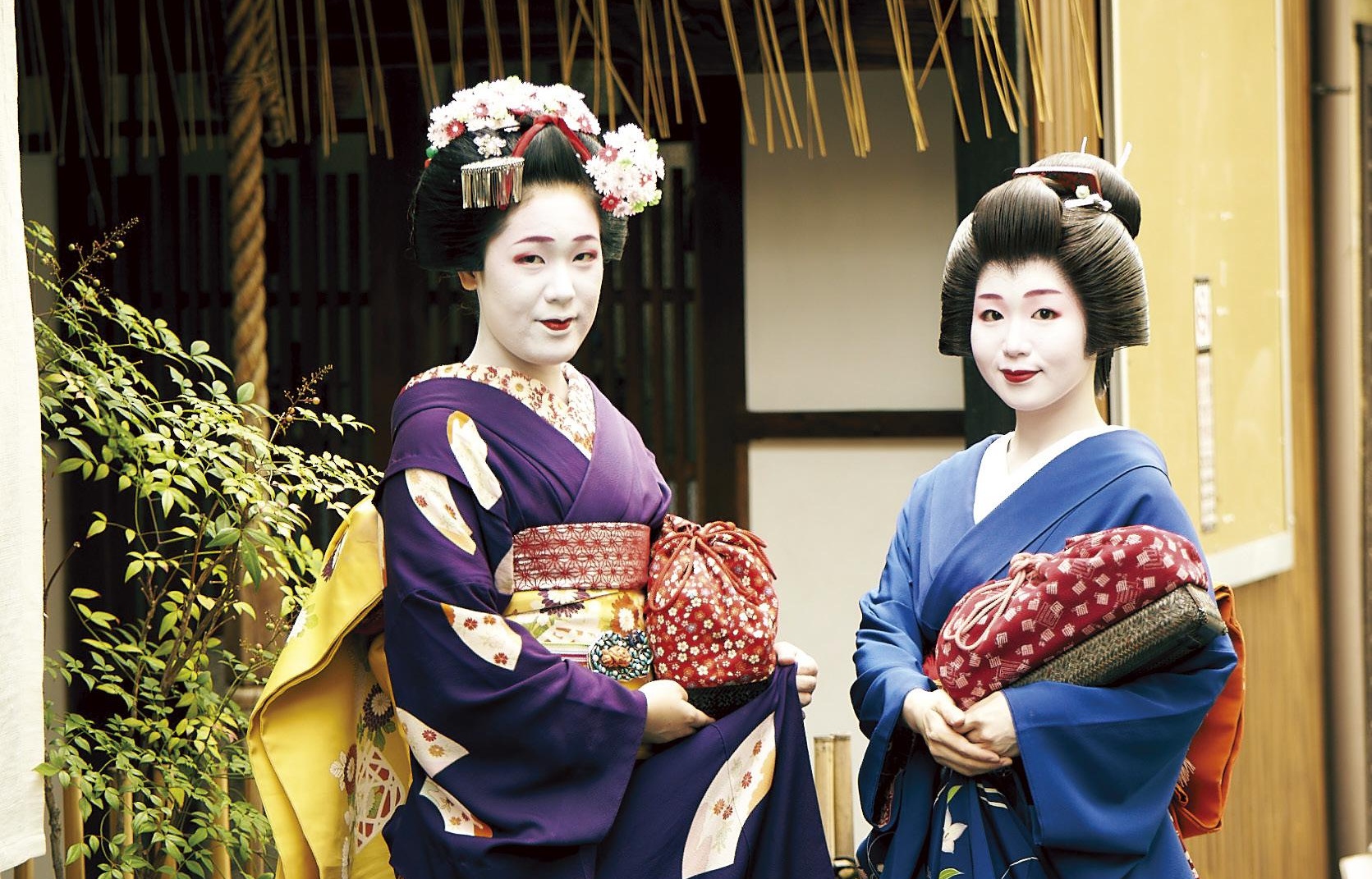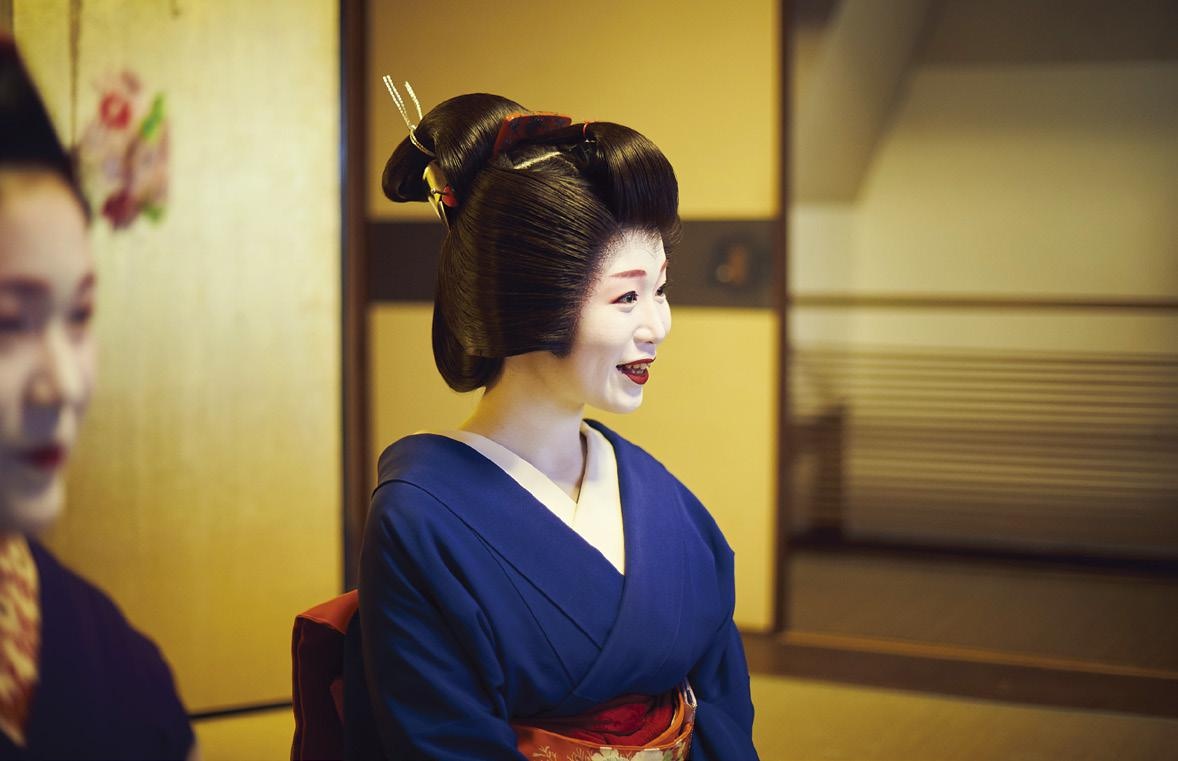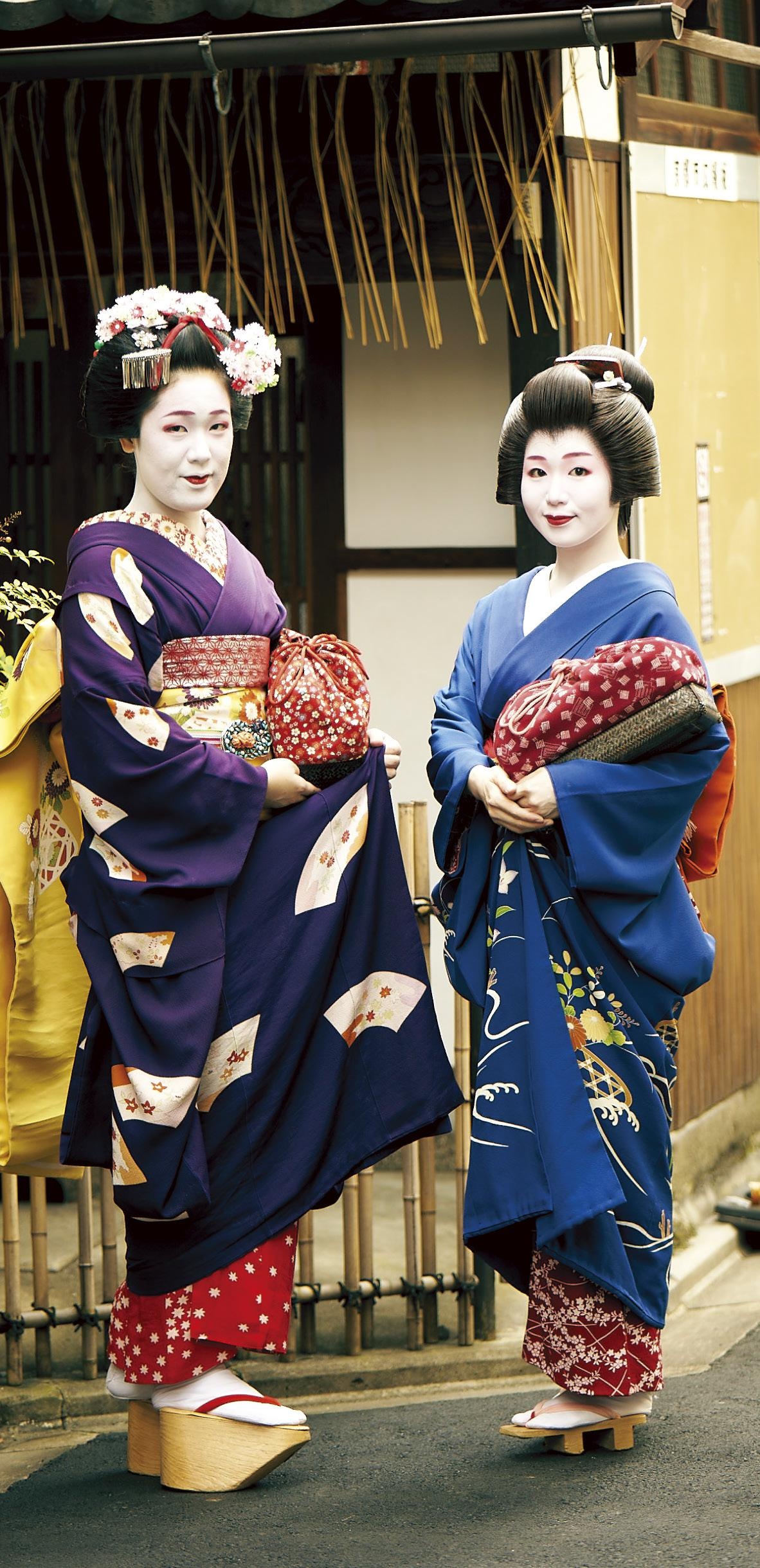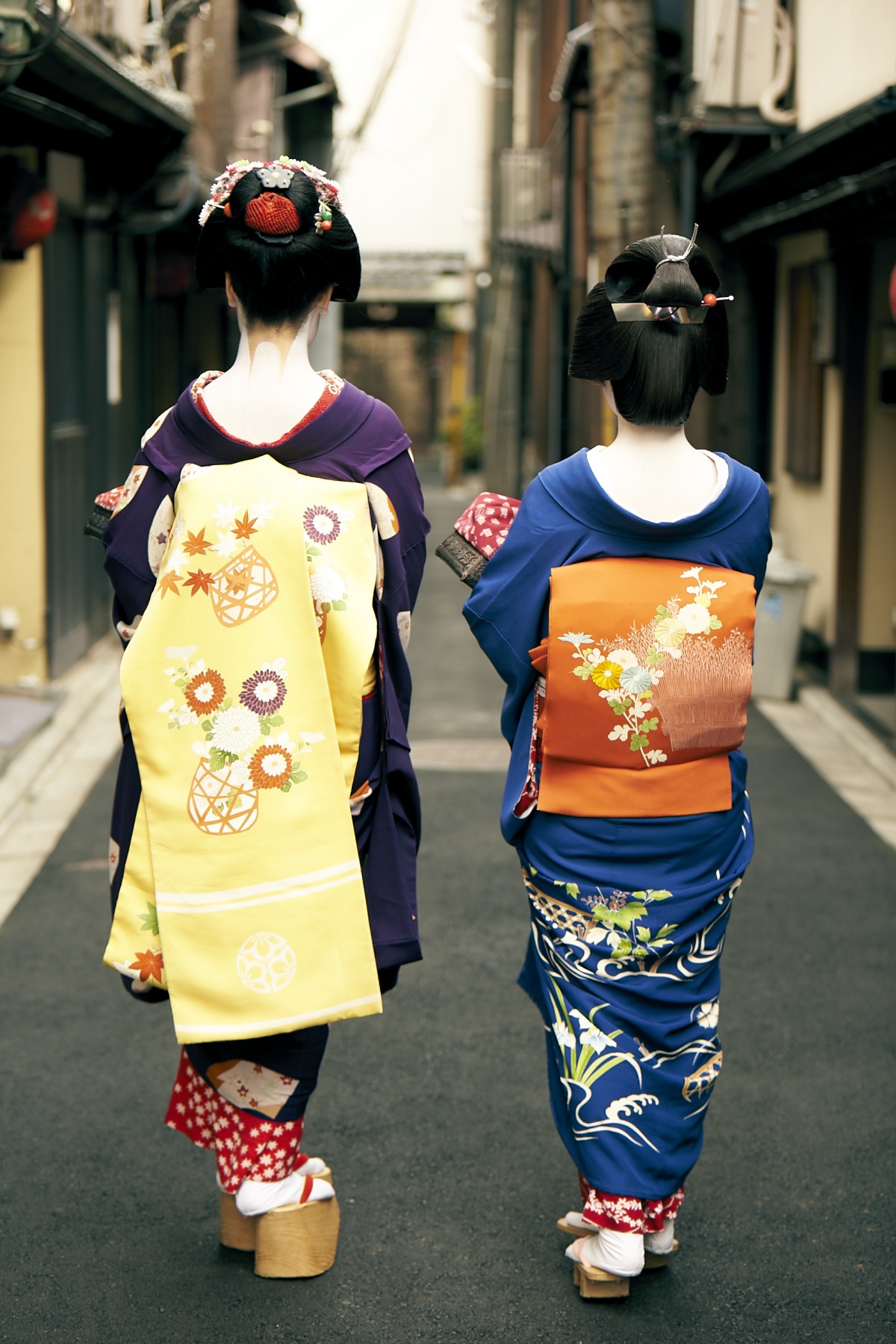Omotenashi of English-Speaking Geisha in Kyoto

Influenced by her family of kimono craftsmen, the geiko known as Tomitsuyu grew up feeling close to Japanese traditional cultural elements such as kimono and period plays. However, the young girl was also interested in the world unknown to her.
By Highlighting Japan
Wanting to learn about different cultures, she left Kyoto where she’d been born and raised and flew to attend a school in New Zealand.
In the lilting tones of the Kyoto dialect, Tomitsuyu explains why she chose to return to Japan and become a geiko after experiencing the world outside Japan. “There were many international students from various countries at the school I attended, including Germany, Brazil and China,” she recalls. “They all knew about their own countries very well, but I knew nothing about Japan.

“I was born in Kyoto, a city blessed with history and tradition, and knowing nothing about it embarrassed me,” she continues, “which made me interested in jobs related to Japanese traditions. During my research, I found out that even an ordinary girl like me could become a geiko. So I contacted the mistress of the okiya I now belong to.”
An okiya is a house that manages maiko (girls training to become geiko) and geiko—the Kyoto word for geisha, women trained to entertain guests with music, conversation and dances at banquets. Girls who aspire to become geiko live in an okiya and train under the mistress, whom they call okaasan (mother). Returning after four years of studying in New Zealand, Tomitsuyu moved into the Tomikiku okiya and teahouse in East Gion, and started learning the fundamentals of becoming a geiko, including how to speak kyo-kotoba, the etiquette and protocol of the kagai geisha district, and traditional arts of singing and dancing.

After going through a training period called shikomi, she made her debut as a maiko in the summer of 2013. At the time, no other maiko in the district could speak fluent English, and Tomitsuyu became a hot topic of conversation for her skill at entertaining guests in that language. The spring of 2018 marked her erikae, meaning that she had ended her time as a maiko and become a full-fledged geiko.
The banquets maiko and geiko are invited to have different purposes, from a business party organized by local regular clients to a tea ceremony for foreign tourists wishing to experience Japanese culture and many more. Tomitsuyu says the key to unparalleled hospitality is to flexibly respond to the needs of her customers, instantly determining what is needed to suit the occasion, whether it is a performance or conversation.

“When speaking in English with non-Japanese clients, I try to speak slowly and clearly. I think they feel less nervous when I speak to them in English,” notes Tomitsuyu, ever the professional. “I’m happy that I can properly answer questions from curious clients. I also want them to remember at least a few Japanese words, though, since they took the trouble to come all the way to Japan, so I make sure to use simple words in kyo-kotoba such as ookini (thank you) and okoshiyasu (welcome).”
Besides entertaining guests at banquets, Tomitsuyu has recently had chances to share her art and culture with the wider world. For instance, she took a business trip overseas to represent and promote Kyoto tourism. Recognizing this trend as a new opportunity, Tomitsuyu says she would like to continue to introduce the charms of Kyoto and kagai culture using her own words while refining her art, and widen her horizons through reading books and visiting museums. Hers is the spirit that keeps omotenashi—the inimitable hospitality of Japan and the geisha district—and its culture going.
Read the original article from Highlighting Japan at the link below!




